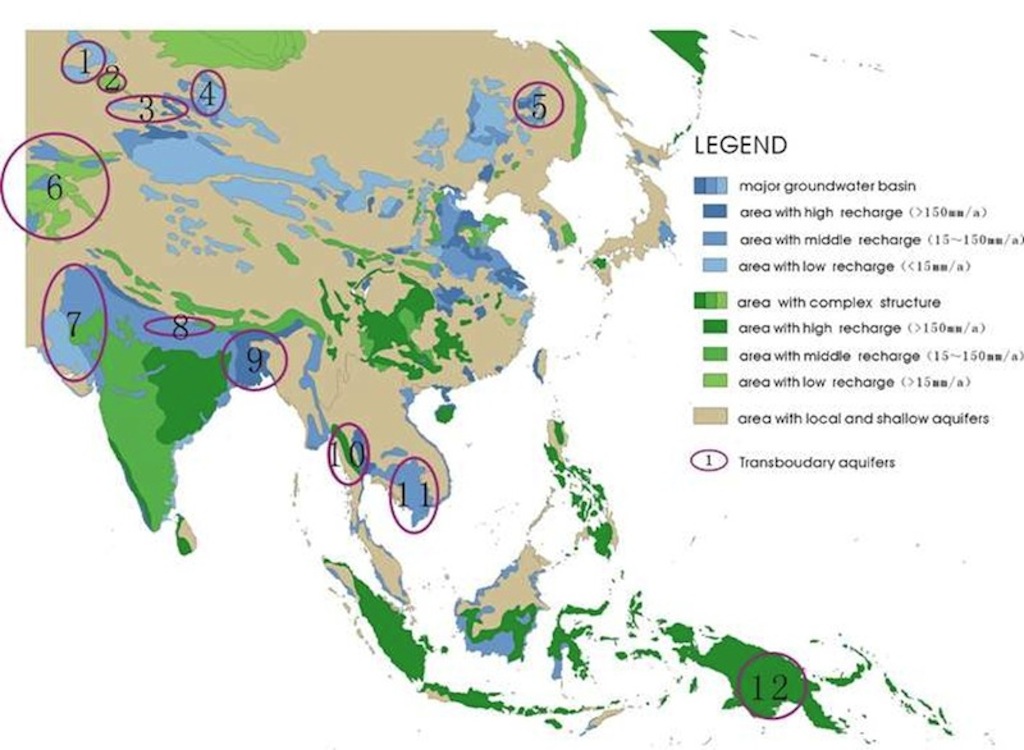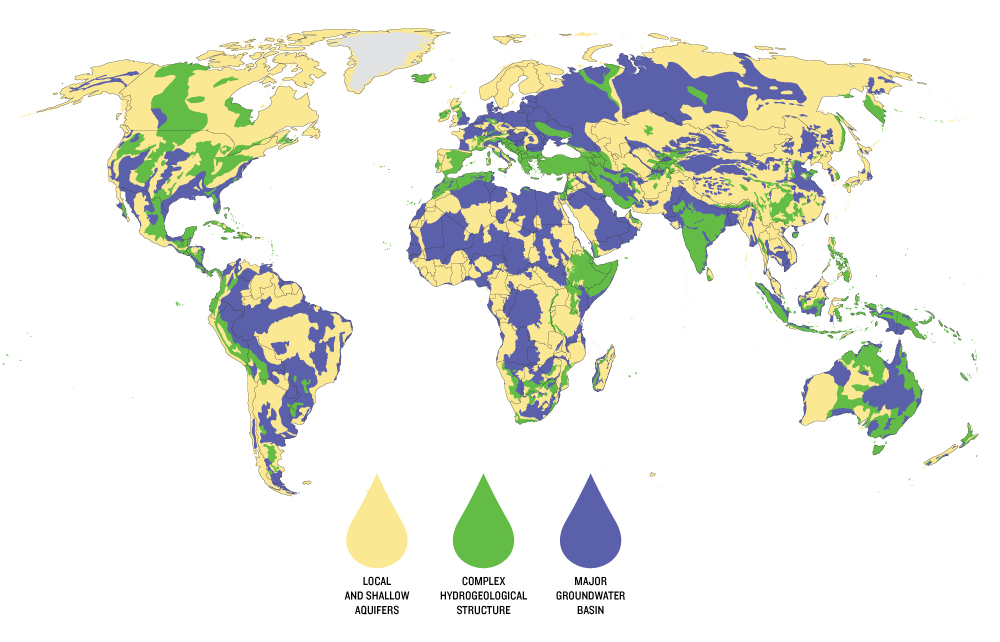![]()
Will
Fukushima's Leaking Radiation By Professor Plutonium*
|
|
Anyone who has been following the ongoing nightmare of the Fukushima nuclear disaster will know that over the past months there have been a slew of news articles documenting the contamination of the land and water beneath the Fukushima Nuclear Power Plant No. 1 (FNPP#1), also referred to as “Dai-ichi,” meaning “no. 1.” The radioactive contamination beneath the FNPP#1 is both highly radioactive and being found at great depths. Situated on the edge of the ocean, FNPP#1 is built on soft and spongy “fill” soil and is nearly the opposite of Chernobyl where that power plant's foundation was rock solid. We can clearly detect a pattern here: the corium globs (melted fuel) from the three melted down reactors (numbers 1, 2, 3) are in unknown locations. That melted fuel could either be in the bottom of the reactor buildings where it is constantly being cooled by the coolant water that Tokyo Electric Power Company (Tepco) is pumping onto it, or melted through the bottom of the buildings and undergoing a China Syndrome phenomenon. Either way not only is coolant water leaking out of the buildings before it is recycled into safer storage tanks, but also groundwater is seeping up into those buildings, becoming contaminated, then pouring out again. The contaminated water is traveling both into the ground water and out to sea. Just recently it has been reported that Tepco is planning to dump all of the stored water on site, as they are running out of space! The filtration system is imperfect and does not remove all radionuclides reliably, and crucially does not remove any tritium, which would be the main source of radiation to be dumped into the ocean. The Tokyo Connection Tokyo is one of the world's most densely populated megapolis regions. Since the 3/11 disaster, radiation has been appearing in the drinking water and airborne fallout is occurring in the prefectures around Fukushima including Tokyo (1; 2; 3). Contamination in Fukushima is particularly bad. I think the current contamination in Tokyo to water and air is from a combination of the initial fallout and the stirring up of radionuclides from wind and weather. It could also be from incineration of radioactive debris, but, I personally doubt that that is spreading much radiation into the environment directly, as the filters would remove most of the radiation (the fly ash is another story as to where and how it is stored). On the other hand, how much illegal burning of debris is occurring which is releasing high levels of radiation? No one knows but it is possible given the dearth of information about the topic in the censored Japanese media. Ongoing emissions from FNPP#1 could also be adding to the general burden of radiation being measured in fallout and water supply in the Tokyo region. Prefectures to the west of Tokyo generally do not measure detectable radiation in fallout or drinking water, according to the government. I find it hard to believe that ongoing airborne emissions from the FNPP#1 are reaching Tokyo in any great amount, directly, however. Tokyo has hotspots but those are mainly from the initial accident. An Underground Plume Of Doom? However, the groundwater contamination issue is something few people are talking about. A colleague of mine who is an astute researcher, Professor Uranium, and I, were discussing the possibility of the Tokyo drinking water supply eventually becoming contaminated by this process. “I think the plume of radiation in the aquifer is relatively slow moving. But my understanding is that the aquifer under Daiichi eventually connects up to other aquifers in Japan, including the one that sources Tokyo. The fuel is underground. The water supply is going to be contaminated in the long run.” Back in 2012 one of the more honest and outspoken nuclear engineers in Japan at the time, Masashi Goto, was quoted as saying he worried the contamination from the FNPP#1 could potentially reach “public water supplies” (4). I located two hydrological maps that appear to be reliable (5; 6). In the first map we can see that the major aquifer, or, “groundwater basin” that clearly includes Tokyo, has a border that cuts just to the south of the FNPP#1. Too close for comfort. |
“Transboundary Aquifers in Asia”

In
the second map, we see that the areas surrounding the major Tokyo groundwater
basin contain “local and shallow aquifers.” This is also obvious from looking
at topographical maps
of Fukushima which has many streams and rivers, something that is very common
in mountainous Japan and typical of such topography.
“Inside the Global Aquifer Map”

|
“Most of the water resources of Tokyo come from rivers” and is processed through a series of dams and reservoirs (7). When the initial 311 nuclear disaster occurred radiation was dumped into some of these reservoirs from above and contaminated public water supplies. They remain so today. The Japanese government states regarding the national water supply: “Surface water (including dam, river and lake) consists 72% of total annual intake, and ground water (including river-bed, shallow and deep well) consists 26% (2006). Therefore, most of the water supply sources can be easily influenced by pollutions such as eutrophication, oil spill accidents, etc” (8). They admit the groundwater supply is vulnerable to pollution, as it certainly would be in the case of long lived radiation. Therefore, it would be logical to hypothesize that the contaminated water leaking from FNPP#1 is finding its way not only into the local and shallow aquifers but ultimately the major Tokyo aquifer. The levels of radiation and the length of time that it would take for the radiation to reach Tokyo might be of minimal concern. That said, radionuclides like cesium and strontium are around for hundreds of years. The question is, how far and how long will it take the radiation to spread underground? Scientists in Japan are not going to talk about this otherwise risk losing their careers for "scare mongering" and the “spreading of false rumors.” Since “science follows funding” it would probably not make for good public relations for hydrologists to be employed to build computer models predicting the worst case outcomes for the continuing leaks of radiation on the Tokyo water supply. The Fracking Election Just a brief note on the upcoming Tokyo city mayoral election. It should come as no surprise that the Nuclear Lobby's candidate, Mr. Masuzoe, is in the lead to win. Masuzoe favors a gradual phase out of nuclear power, which is vague enough to mean anything or nothing and is typical political doublespeak. Masuzoe is a former health minister but has not been outspoken about the dangers of radiation. Prime Minister Abe stands firmly behind Masuzoe while the Japanese media studiously ignores the other candidates, virtually assuring a Masuzoe “victory.” Former Japan Prime Minister, Mr. Hosokawa, who has spoken out strongly and intelligently against nuclear power, is lagging behind according to one opinion poll. Alas, the opposition candidates are not organized against the Nuclear Lobby's Liberal Democratic Party (LDP), who have been in power since WWII. The fragmented “opposition” led by the Japan Communist Party (JCP) inevitably guarantee LDP hegemony, due to their inflexibility and dogmatic approach to politics. Talk about pounding your head against a brick wall, it almost seems like the JCP are a paid opposition to insure no viable third way can occur. In Tokyo the billboards that advertise candidates show a sleepy looking Hosokawa, a political has-been who appears to be been sitting at the end of the bar drinking whisky and singing karaoke. On the other hand, the LDP's glad-hander, Mr. Masuzoe is cheerful and looks as if he just had a fresh injection of botox. After all, Masuzoe is a retired TV commentator and a friendly TV face to the bewildered masses who don't know where to turn. The JCP candidate, Mr. Utsunomiya, is probably a very intelligent and principled candidate, a lawyer who is said to fight for justice for the average worker. Unfortunately, the man has a mild mannered appearance and demeanor that rivals the excitment of a comatose flea on a rhino's backside. I hope I am wrong but I'm afraid the LDP will stay in power and not only will nuclear power plants be restarted after the post-3/11 shutdowns, it is even possible that new reactors could be built in Japan! It should be noted that very few LDP politicians actually support the latter option. On the other hand, a rational plan for renewable energy that is badly needed, and could in theory provide one hundred percent of Japan's electricity needs by 2050, will be further sabotaged. * Professor Plutonium, aka, Richard Wilcox, holds a Ph.D. in Environmental Studies from a social science, holistic perspective. He teaches at a number of universities in the Tokyo, Japan area. His articles on environmental topics including the Fukushima nuclear disaster are archived at http://wilcoxrb99.wordpress.com/ and he can be contacted at wilcoxrb2013@gmail.com
References
1.
Monitoring information of environmental radioactivity level NRA
2.
Reading
of radioactivity level in drinking water by prefecture
3.
Readings of environmental radioactivity level by prefecture (Fallout)(December,
2013)
4.
Japan struggling to store radioactive water
5.
Archive for the ‘International Water Law’ Category
6.
GROUNDWATER WAKE-UP
7.
Stable supply of safe, better tasting water
8.
Overview of water supply services
|
| Donate to Rense.com Support Free And Honest Journalism At Rense.com | Subscribe To RenseRadio! Enormous Online Archives, MP3s, Streaming Audio Files, Highest Quality Live Programs |